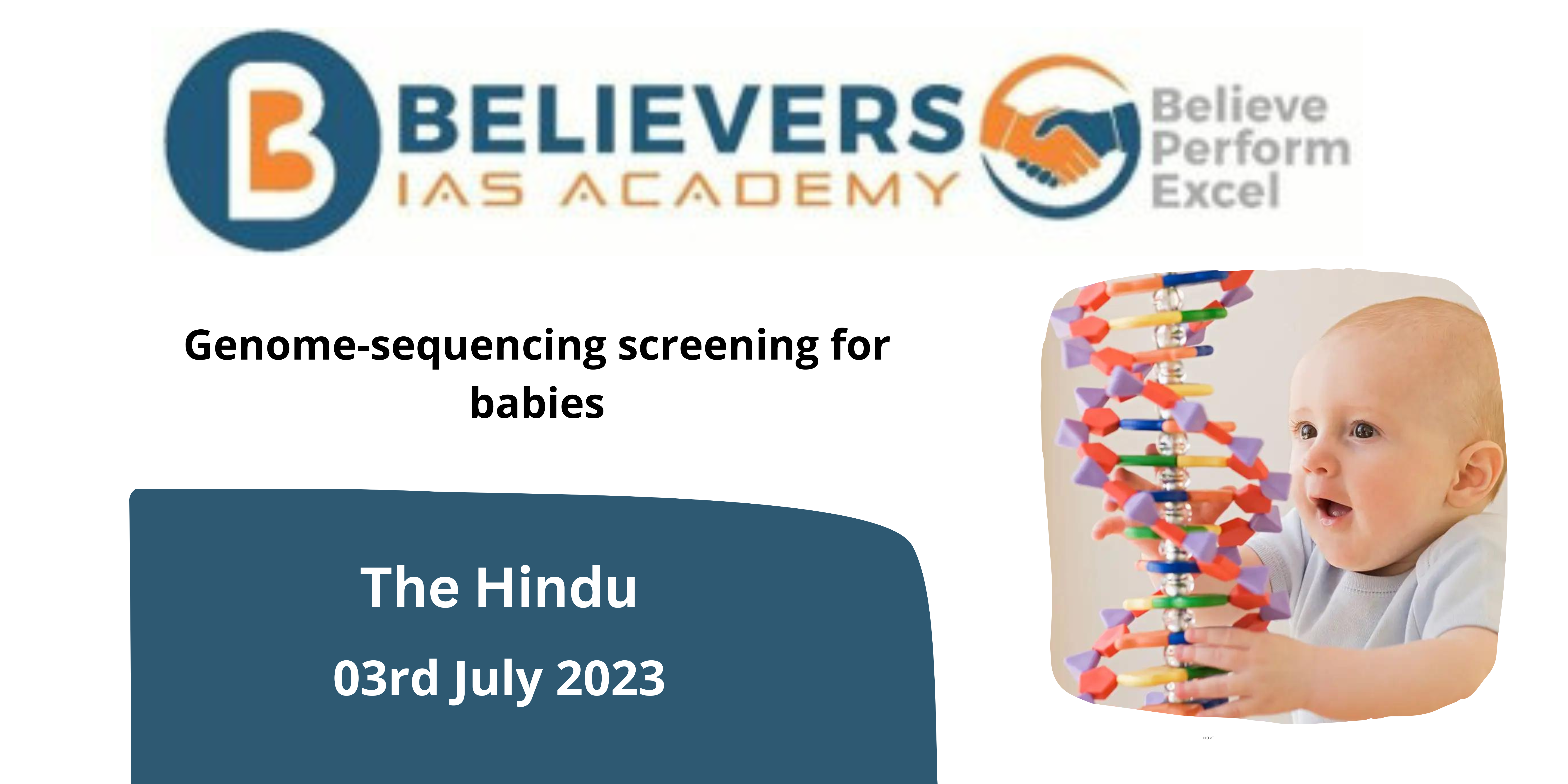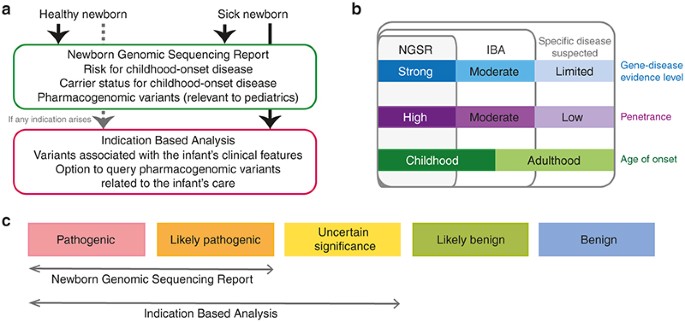Genome-sequencing screening for babies
Context:
- Recent developments have made genome sequencing more accessible, inexpensive, and available to more people. Additionally, it provides substantially higher coverage for genetic disease screenings. Importantly, this could aid medical professionals in making an accurate diagnosis quickly because sequencing is also a “single” test as opposed to the numerous procedures carried out as part of standard newborn screening.
- Compared to standard genetic tests, which only provide a diagnosis in about 10% of cases, whole-genome sequencing could provide a much higher diagnosis rate of about 40%, with 26% of the diagnosed children benefiting from a more rapid diagnosis that lessens the severity of their illness and, as a result, lower treatment costs.
- The sequences of 32 ill children and 127 seemingly healthy infants were examined in a recent study that was published in the American Journal of Human Genetics. It was discovered that a little more than 10% of newborns had an unforeseen risk of genetic disorders. Sequences identified the causes of disease in three of the babies after three to five years of follow-up; for the 14 other babies, a clearer understanding of the risk allowed for improved medical surveillance.
What is Genome Sequencing?
- A method called whole genome sequencing (WGS) is used to determine the entire DNA sequence of an organism’s genome all at once.

- It entails sequencing every chromosome in an organism, including DNA from mitochondria and, in plants, DNA from chloroplasts.
- WGS has long been utilised as a research technique to examine disease causes, evolutionary biology, and genetic variation.
- However, WGS has also been used in clinical settings since 2014 to perhaps direct therapeutic approaches.
- In personalised medicine, whole genome sequencing data can help tailor medicines based on a patient’s genetic profile.
- By examining a person’s full genome, scientists and medical professionals can discover genetic variants connected to disease risk and treatment response.
- WGS can help predict a person’s likelihood of acquiring a particular disease and help focus prevention efforts.
- Compared to DNA profiling, which merely assesses the chance that genetic material originated from a particular person or group, whole genome sequencing is more thorough.
- DNA profiling doesn’t reveal any new details about ancestry, origin, or illness susceptibility.
What is the importance of early screening and its relation to newborn babies?
- Importance: Early diagnosis of genetic illnesses in infants is important because it enables the use of effective treatments and has the potential to save lives or prevent impairments. Newborn screening programmes work to give this early diagnosis.
- Limitations of traditional newborn screening: Traditional newborn screening programmes are subject to several limitations, including a small selection of genetic testing that could leave out some disorders. Whole-genome sequencing provides a more thorough method of genetic disease screening.
- Sequencing Healthy Babies: Sequencing babies as part of standard medical treatment might also be advantageous because it can reveal previously unknown concerns for genetic diseases. This makes it possible to better monitor medical conditions and intervene as necessary. Additionally, it helps pinpoint relatives who are vulnerable and might gain from genetic testing.
What are the boons and bans of genome sequencing?
- Ethical considerations: Newborn whole-genome sequencing presents ethical issues, such as handling and sharing accidental discoveries. It’s important to address concerns about fair access to technology, psychological effects, and privacy.
- Possibility and accountability: By enabling early detection of genetic abnormalities, individualised treatment, and a healthier future, rapid whole-genome sequencing has the potential to revolutionise healthcare. However, it’s crucial to carefully weigh the advantages and potential drawbacks.





